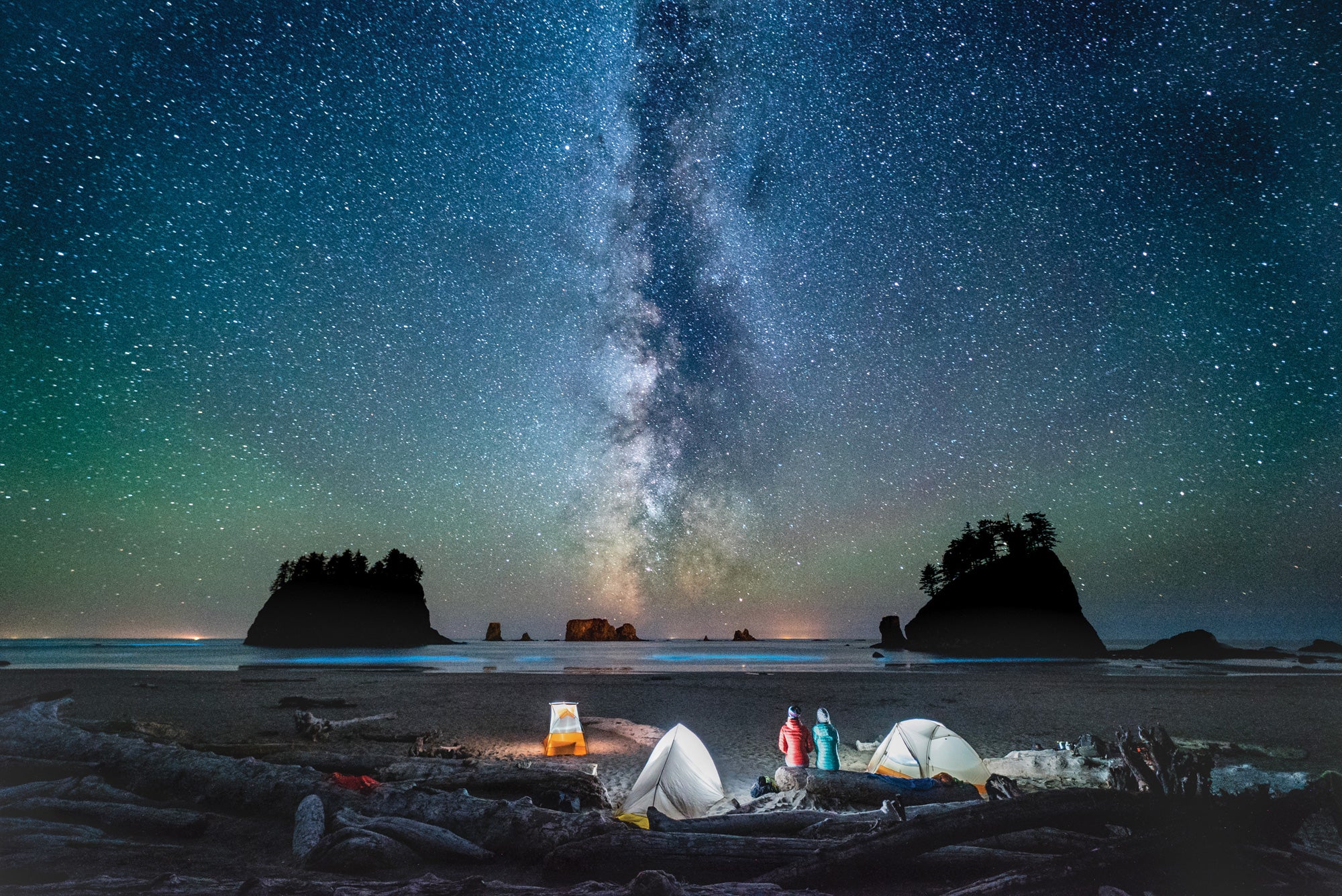See Bioluminescence

'Travis Burke Photography'
At first, I thought it was a trick of the eye. Or maybe a reflection as the sunset faded. Or did someone in camp flash a headlamp toward the waves?
But as dusk settled and the light grew stronger, I could tell it was no illusion: Every time a wave broke, the surf glowed green as if lit from within. The water got brighter as the night got darker, leaving a sparkling sheen on the sand as each wave receded. And the show was just getting started.
I was camping on Isla Carmen off the coast of Baja, night one of a winter sea kayaking adventure in the Sea of Cortez, when my friends and I chanced upon a bloom of bioluminescent plankton. The tiny organisms glow in the dark when jostled by the current—or a hand or paddle—and can light up the ocean like Christmas lights. Water temperature, seasonal currents, and pH levels all affect the timing and intensity of bioluminescent plankton and algae blooms, so hitting the phenomenon just right is mostly good luck.
For us, that first night was just the warm-up. The bioluminescence tripled in brightness on night two and peaked on night three. We went snorkeling after dark and watched the water explode with light at every stroke. I sat on the sandy bottom and waved my hand in front of my mask, creating brilliant streaks of glowing bubbles. I laughed and almost choked on saltwater. Was this the coolest thing I’d ever seen?
Actually, no. It got even better when we jumped in our kayaks. Each paddle stroke lit the sea like a green lightning strike, and the boats left wakes of light. Glowing streaks scored the ocean even as the kayaks vanished in the darkness.
Some of the best experiences in the outdoors can only be had if you’re willing to put in the effort. Not this one. It’s easy. But you have to be in the right place at the right time.
DO IT Bioluminescent bacteria and plankton can be spotted on both coasts in the States, though are more abundant (and predictable) in warmer waters like off the coast of Florida or in Puerto Rico. Stage a four- to eight-day sea kayaking trip in the Sea of Cortez (like the author) by circling Isla Carmen in Loreto Bay National Marine Park.